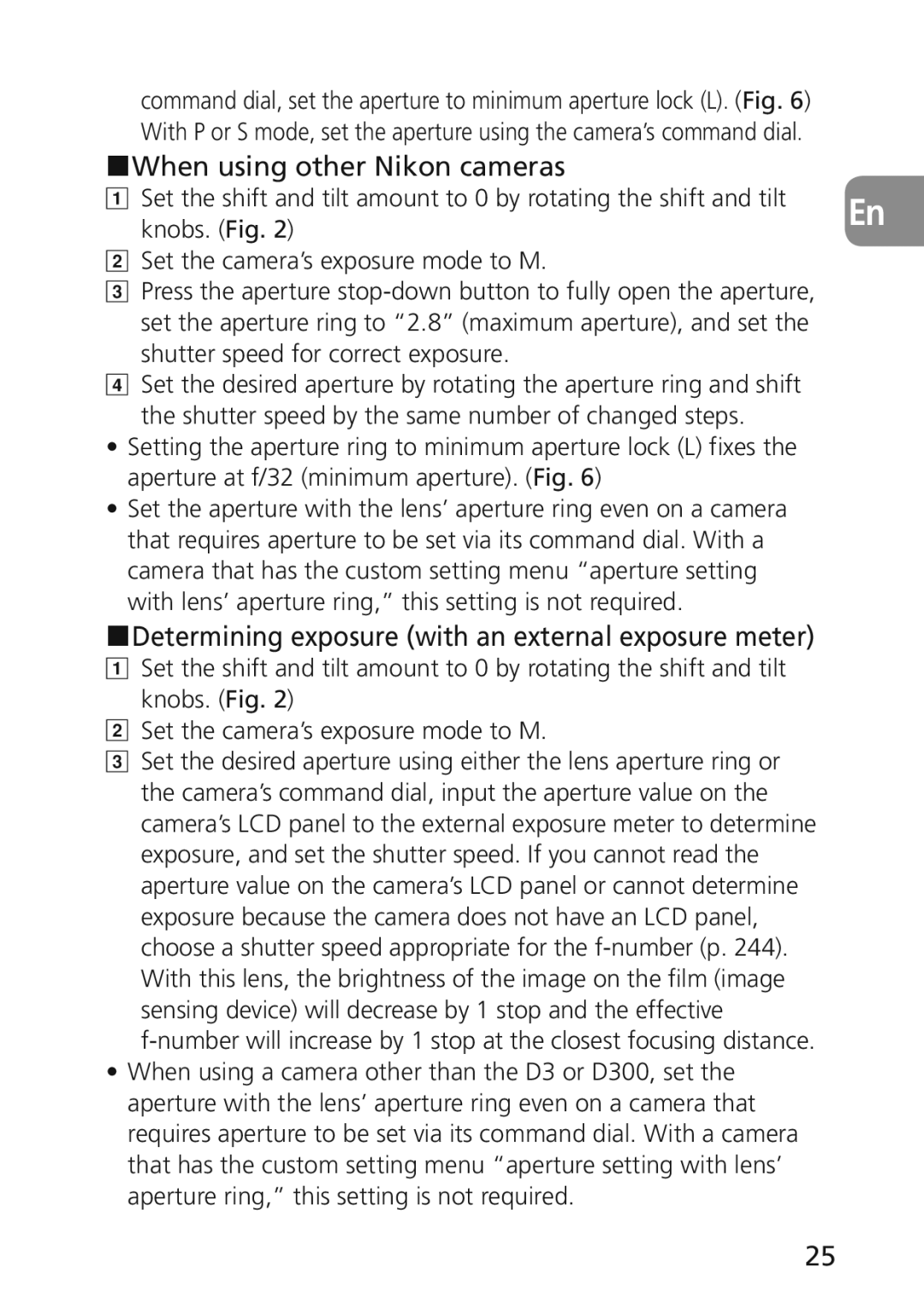command dial, set the aperture to minimum aperture lock (L). (Fig. 6) With P or S mode, set the aperture using the camera’s command dial.
When using other Nikon cameras
a Set the shift and tilt amount to 0 by rotating the shift and tilt | En | |
knobs. (Fig. 2) | ||
|
bSet the camera’s exposure mode to M.
cPress the aperture
dSet the desired aperture by rotating the aperture ring and shift the shutter speed by the same number of changed steps.
•Setting the aperture ring to minimum aperture lock (L) fixes the aperture at f/32 (minimum aperture). (Fig. 6)
•Set the aperture with the lens’ aperture ring even on a camera that requires aperture to be set via its command dial. With a camera that has the custom setting menu “aperture setting with lens’ aperture ring,” this setting is not required.
Determining exposure (with an external exposure meter)
aSet the shift and tilt amount to 0 by rotating the shift and tilt knobs. (Fig. 2)
bSet the camera’s exposure mode to M.
cSet the desired aperture using either the lens aperture ring or the camera’s command dial, input the aperture value on the camera’s LCD panel to the external exposure meter to determine exposure, and set the shutter speed. If you cannot read the
aperture value on the camera’s LCD panel or cannot determine exposure because the camera does not have an LCD panel, choose a shutter speed appropriate for the
•When using a camera other than the D3 or D300, set the aperture with the lens’ aperture ring even on a camera that requires aperture to be set via its command dial. With a camera that has the custom setting menu “aperture setting with lens’ aperture ring,” this setting is not required.
25
